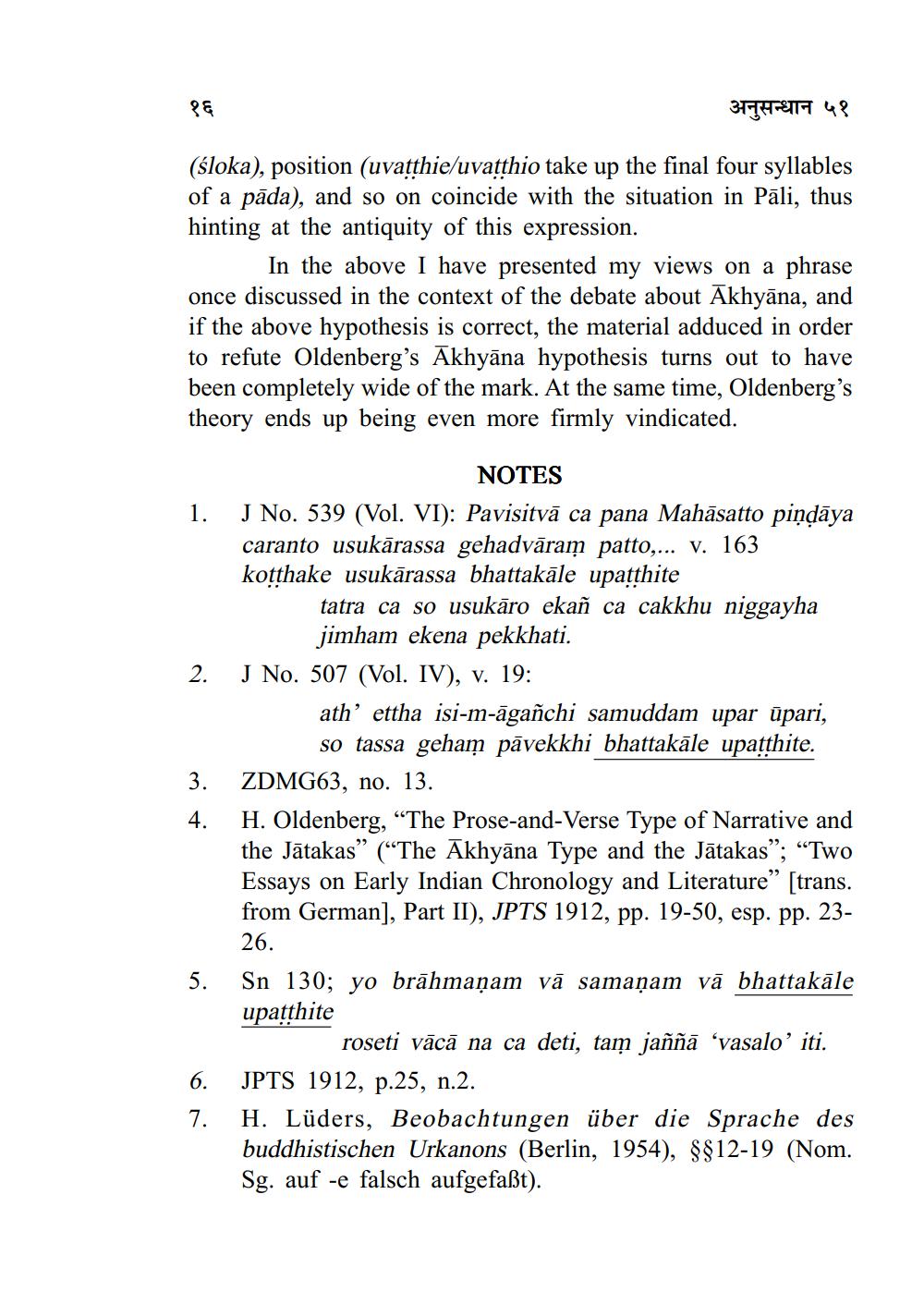Book Title: Bhattkale Upatthite Example of a Mistranslation in Pali Canon Author(s): Yajima Michihiko Publisher: ZZ_Anusandhan View full book textPage 5
________________ १६ अनुसन्धान ५१ (śloka), position (uvatthie/uvatthio take up the final four syllables of a pāda), and so on coincide with the situation in Pāli, thus hinting at the antiquity of this expression. In the above I have presented my views on a phrase once discussed in the context of the debate about Akhyāna, and if the above hypothesis is correct, the material adduced in order to refute Oldenberg's ākhyāna hypothesis turns out to have been completely wide of the mark. At the same time, Oldenberg's theory ends up being even more firmly vindicated. NOTES 1. J No. 539 (Vol. VI): Pavisitvā ca pana Mahāsatto piņdāya caranto usukārassa gehadvāram patto,... V. 163 kotthake usukārassa bhattakāle upatthite tatra ca so usukāro ekañ ca cakkhu niggayha jimham ekena pekkhati. 2. J No. 507 (Vol. IV), v. 19: ath' ettha isi-m-āgañchi samuddam upar ūpari, so tassa geham pāvekkhi bhattakāle upatthite. 3. ZDMG63, no. 13. 4. H. Oldenberg, “The Prose-and-Verse Type of Narrative and the Jātakas” (“The Akhyāna Type and the Jātakas”; “Two Essays on Early Indian Chronology and Literature” [trans. from German], Part II), JPTS 1912, pp. 19-50, esp. pp. 23 26. 5. Sn 130; yo brāhmaṇam vā samaņam vā bhattakāle upatthite roseti vācā na ca deti, tam jaññā ‘vasalo' iti. 6. JPTS 1912, p.25, n.2. 7. H. Lüders, Beobachtungen über die Sprache des buddhistischen Urkanons (Berlin, 1954), $$12-19 (Nom. Sg. auf -e falsch aufgefaßt).Page Navigation
1 ... 3 4 5 6 7 8 9 10 11 12
